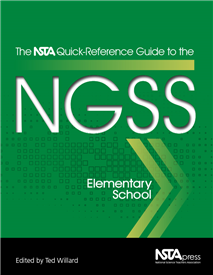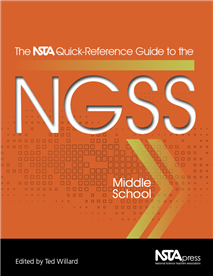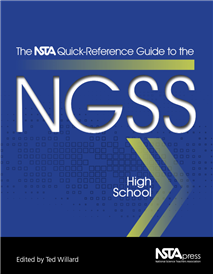New from NSTA: Quick Reference Guides to the Next Generation Science Standards
By Lauren Jonas, NSTA Assistant Executive Director
Posted on 2014-11-10
 In focus groups, science teachers tell NSTA staff members that time is their biggest challenge. We hear that again and again, and we listen! Many science educators are excited about the Next Generation Science Standards (NGSS) and have begun to implement them in their schools and districts. We hear from many members of our network that, even in states where the standards have not been adopted, teachers still want to use them because of the innovative research underpinning them, and to use the practices. And they tell us they need resources that are quick and easy to access. So we are pleased to say that we have released a series of quick reference guides to the NGSS, and they’ve been edited by our in-house NGSS guru, Ted Willard!
In focus groups, science teachers tell NSTA staff members that time is their biggest challenge. We hear that again and again, and we listen! Many science educators are excited about the Next Generation Science Standards (NGSS) and have begun to implement them in their schools and districts. We hear from many members of our network that, even in states where the standards have not been adopted, teachers still want to use them because of the innovative research underpinning them, and to use the practices. And they tell us they need resources that are quick and easy to access. So we are pleased to say that we have released a series of quick reference guides to the NGSS, and they’ve been edited by our in-house NGSS guru, Ted Willard!
H ere’s a link to each grade-specific version, and the description follows:
ere’s a link to each grade-specific version, and the description follows:
- The NSTA Quick-Reference Guide to the NGSS, Elementary School
- The NSTA Quick-Reference Guide to the NGSS, Middle School
- The NSTA Quick-Reference Guide to the NGSS, High School
- The NSTA Quick-Reference Guide to the NGSS, K–12
Since the release of the first draft of the Next Generation Science Standards (NGSS), NSTA has been at the forefront in promoting the standards and helping science educators become familiar with and learn to navigate this exciting but complex document. Later, when the final version was released and states began adopting the standards, NSTA started to develop resources that would assist educators with their implementation.
 Along the way, NSTA learned that even the simplest of resources, like a one-page cheat sheet, can be extremely useful. Many of those tools are collected here, including:
Along the way, NSTA learned that even the simplest of resources, like a one-page cheat sheet, can be extremely useful. Many of those tools are collected here, including:
- a two-page “cheat sheet” that describes the practices, core ideas, and crosscutting concepts that make up the three dimensions described in A Framework for K–12 Science Education;
- an “Inside the Box” graphic that spells out all of the individual sections of text that appear on a page of the NGSS;
- a Venn diagram comparing the practices in NGSS, Common Core State Standards, Mathematics, and Common Core State Standards, English Language Arts; and
- matrices showing how the NGSS are organized by topic and disciplinary core idea.
This guide also provides the appropriate performance expectations; disciplinary core ideas; practices; crosscutting concepts; connections to engineering, technology, and applications of science; and connections to nature o f science. It is designed to be used with the NGSS.
f science. It is designed to be used with the NGSS.
The NSTA Quick-Reference Guides to the NGSS are also available in grade-specific versions—one each for elementary and high school—plus a comprehensive K–12 edition. The four Quick-Reference Guides are indispensable to science teachers at all levels, as well as to administrators, curriculum developers, and teacher educators.
Disclaimer: The views expressed in this blog post are those of the author(s) and do not necessarily reflect the official position of the National Science Teaching Association (NSTA).


